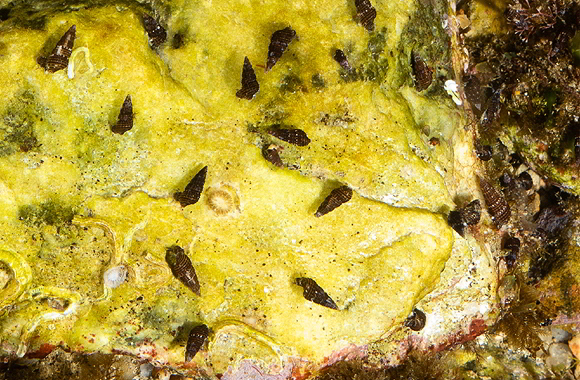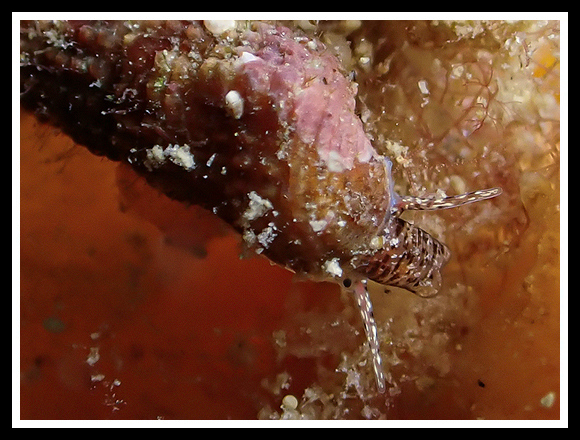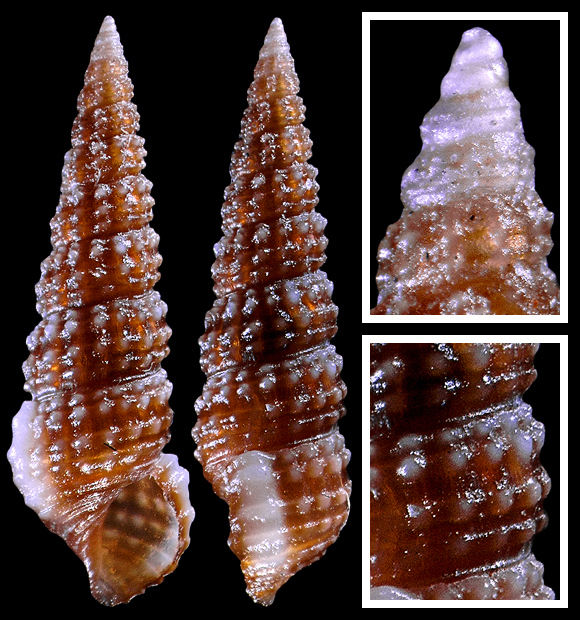
Grazer in shallow water and infralittoral gardens, on sand, or under stones, and in algae like Gelidium latifolium.
Protonym: Strombiformis reticulatus.
Synonyms: afrum, atticum, bifasciatum, jadertinum, scabrum…
Four rows of nodules per late whorl; the subsutural row has somewhat smaller nodules than the three below; the nodules can be paler than the shell; the colour varies from yellow to chestnut; presence of randomly scattered pale varices that can affect more than one whorl.
Subadult from 8m deep, at base of submarine bank of conglomerate, 600m east of Mochlos, NE. of Kolpos Mirabellou, NE. Crete. 7,3mm.
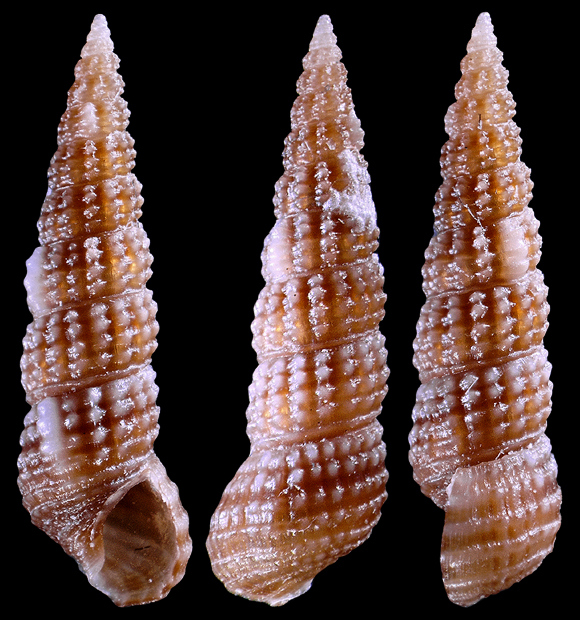
The shell is usually slimmer than that of the other brownish species latreillii Payraudeau. It can be easily distinguished from the latter by the absence of the darker coloured spiral bands. – 12m deep, Vouliagmeni, Attikí, SE. Greece. 8,5mm.
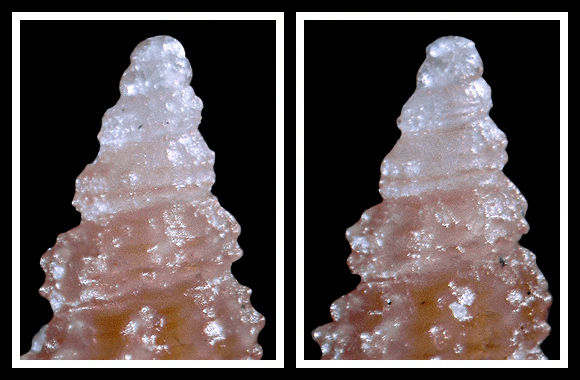
Protoconch often white or paler than the teleoconch, paucispiral, roughly granulose. As in latreillii, two spiral keels appear at the transition with the teleoconch, one at the periphery and the second just below. The first teleoconch whorl is slightly coloured. The longitudinal sculpture appears very weakly, still almost unformed. Quickly, it will become orthocline.
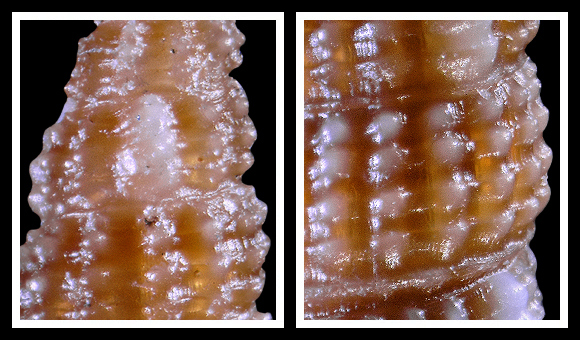
The whorls are more convex than in latreillii. They are separated from each other by a marked suture. For long, they bear only 3 spiral cords. The fourth one seems to appear only between the seventh and the eighth whorl.
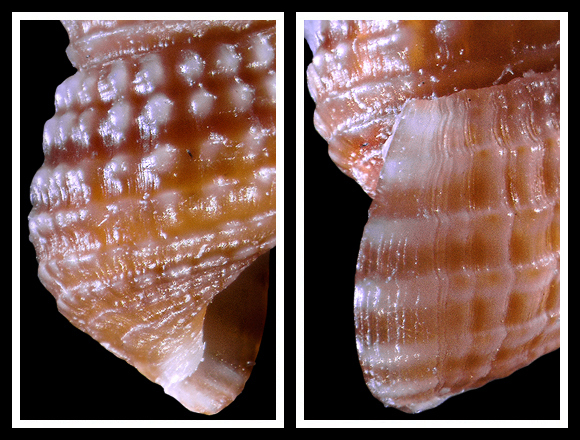
On the last whorl, the abapical spiral row looses its nodules, and the further spirals will be completely devoid of them. The anterior canal is short, shallow, inclined to the axis of the spire. As often in adult Gastropoda, the labrum is heavily marked with numerous growth ribs, and the suture is, at this place, deeply carved. Notice how the spirals weaken near the labrum.
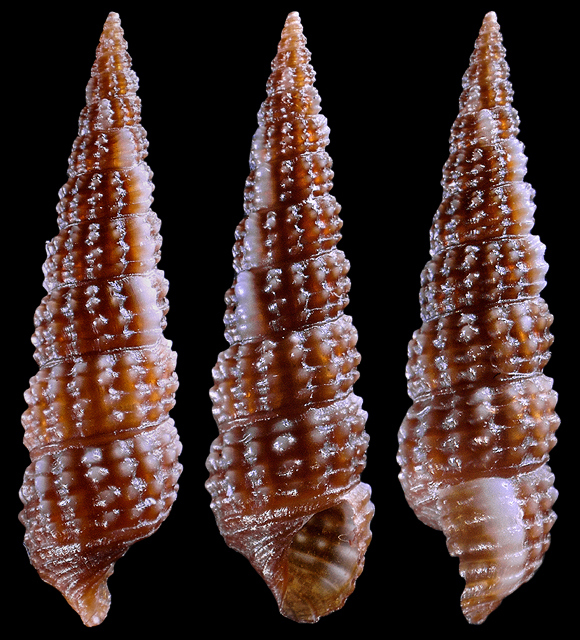
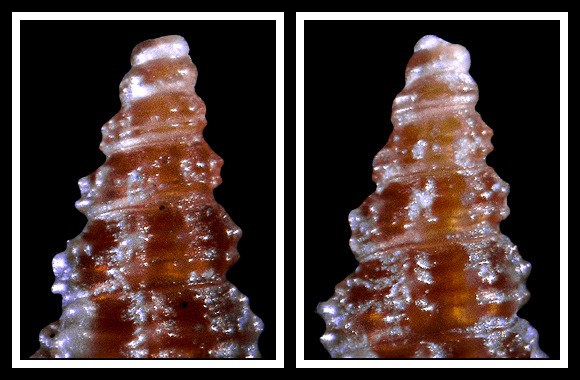
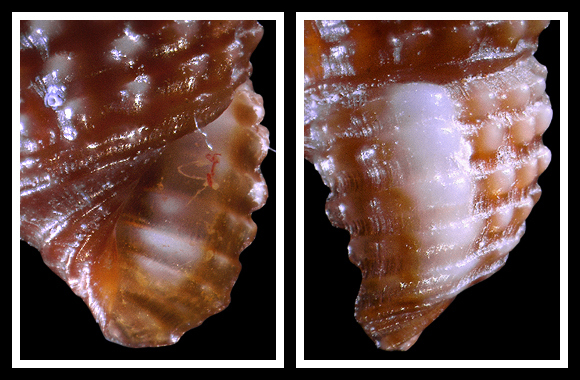
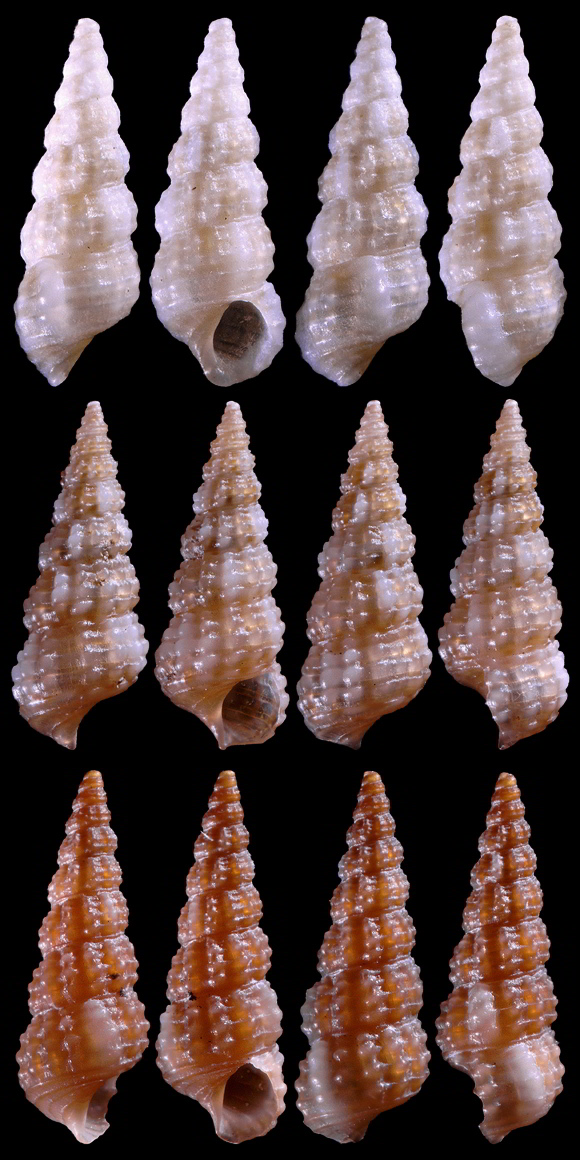
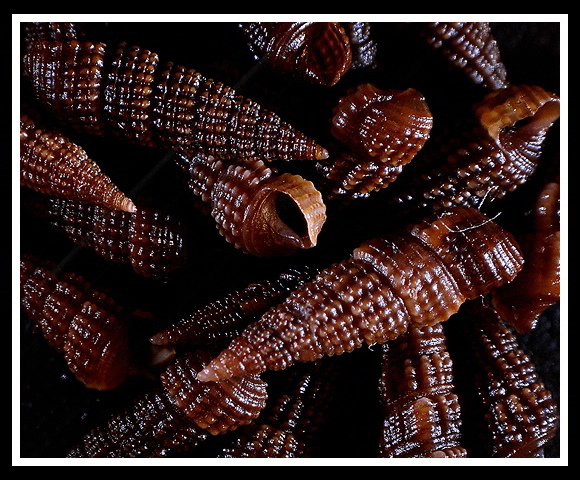
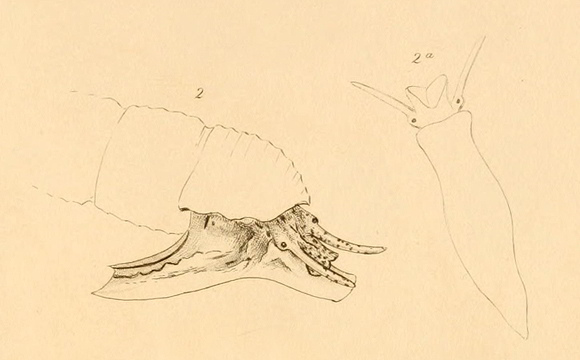
« The animal, of which, besides our own notes, we have been favoured with a drawing by Mr. Alder, and fresh observations by Mr. Clark, is rather short as compared with the shell; it is of a yellowish-white hue, with dusky markings. Its muzzle is long, rather broad, and vertically cloven at the end, as well as the head and neck dusky and marked with black and brown transverse lines. » – F. & H.: op. cit. vol. III, London 1853, p.194.
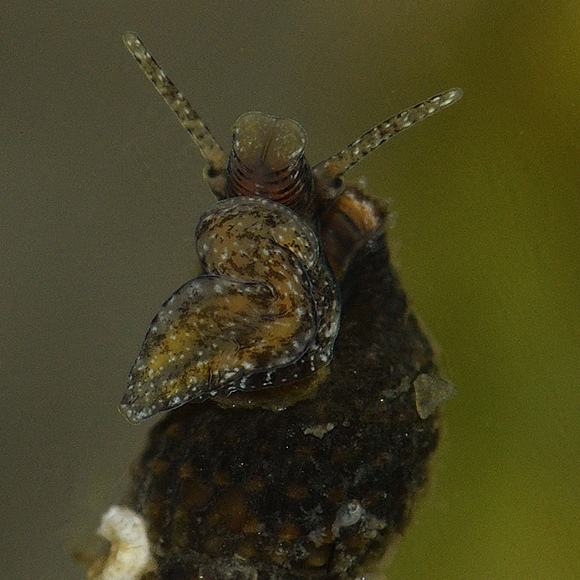
« The tentacles are cylindrical, not remarkably long, or pointed, always exceeding in length the snout, though not greatly, yellowish, speckled with dusky and opaque yellow, in some instances marked with two fine dark-brown lateral lines; the eyes are borne on rather prominent pale bulgings at their external bases. The foot is obtusely triangular, and is gently auricled in front. » – Ibid.
Port Leucate, Occitania, S. France.
Original picture provided by A. Bertrand (FR) – (CC BY-NC-SA).
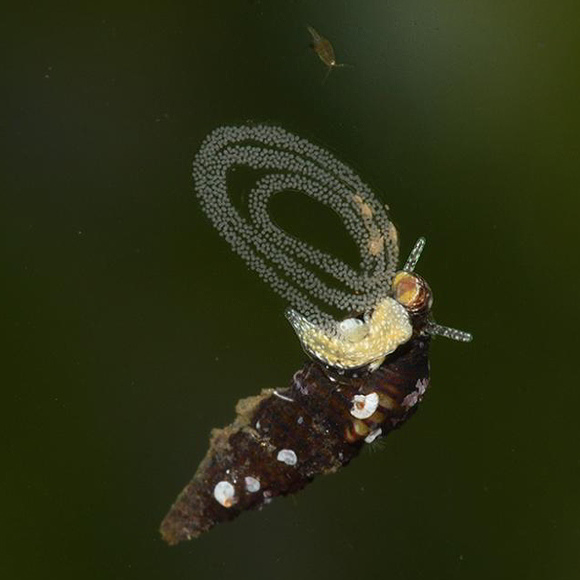
Original picture provided by A. Bertrand (FR) – (CC BY-NC-SA).
